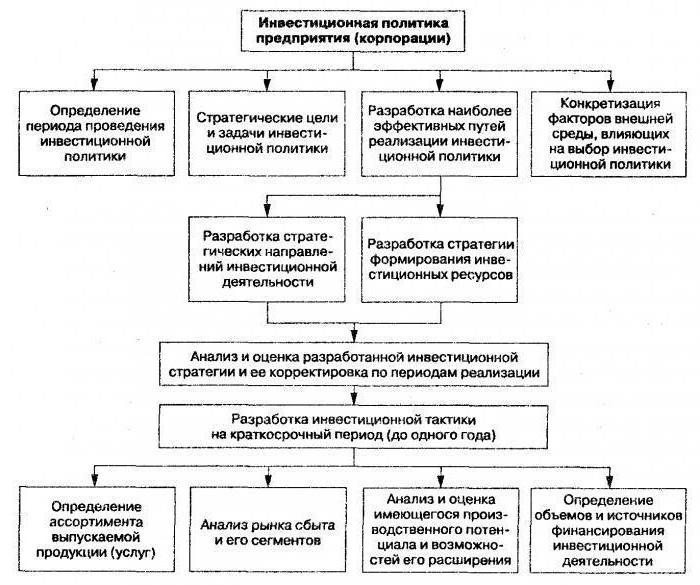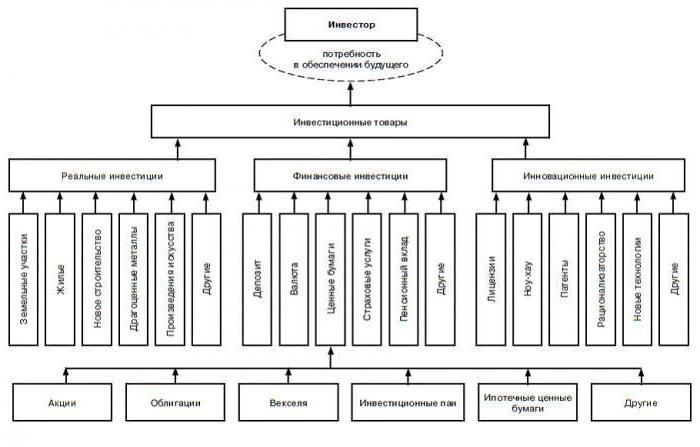Funds that are invested in fixed assets (or capital), as well as in long-term securities, are capital investments. This is a collective term. Capital investments differ from funds invested in short-term securities or current assets. If things are going well, assets of non-capital value are circulated during the twelve-month reporting period, that is, the fiscal year, and the company's activities in the turnover of these investments can be reflected in the report. Capital investments cannot be met within this period.

Accounting
The accounting report reflects all investments and capital investments in account 08, which is devoted to investments in non-current assets. In order to register without errors, there is a certain procedure for its implementation. Guidelines for the accounting of fixed assets, as well as for real estate, if investments and capital investments have already been completed for these objects, the primary accounting documents regarding acceptance and transfer have already been drawn up and submitted for state registration, where the changes made will be recorded and actually operated, are listed in detail in paragraph 52 of this provision.
Real investments in fixed assets (fixed capital) are also the costs of expanding existing enterprises or new construction, reconstruction, the purchase of equipment or machinery, technical re-equipment, design or survey work, and the like. Accounting for capital investments incorporates a lot of components. This also includes investments in the construction of housing, cultural and domestic facilities.
Statistics and Analysis
Capital investments (or capital-forming) are constantly present both in statistical accounting and in economic analysis. Their economic content is part of the social product, at its core it is an accumulation fund that is aimed at reproduction. Investments in capital construction, in the acquisition of means of labor, equipment - this is the main form of investing money in accordance with the term in question.
Capital investments can be made both by individuals and legal entities, and, of course, by the state. The concept of capital investments is widely interpreted, but the main goal of such investments is usually the same - it is work on the development of the national economy, its material and technical base, increase in the production capacities of industry or agriculture, as well as any other industries. This is work to accelerate the pace of scientific and technological progress.

Forms
The basis for the development or creation of the material and technical base of associations, enterprises and entire industries are capital investments. Real investment (what we call direct purchase of capital in a wide variety of forms) is an investment in reproduction, in intangible assets, in future growth of inventories or inventories. This is mainly related to the production or operational (commercial) activities of the enterprise. Today, real investments have the following main forms.
- A complete property complex is being acquired. Such investments are now unusually popular: the investment operation of the largest enterprises that provide regional or commodity diversification of production is carried out.This form of investment is developing because privatization and (or) bankruptcy of an increasing number of enterprises are carried out, and they are acquired not too expensive and therefore profitable.
- Investments in capital construction. This investment operation is associated with a new facility, with its construction according to a standard or specially developed project with a technologically complete cycle in specially designated areas. If the company plans to radically increase the volume of its activities, resorting to new construction is simply necessary. This development of new products, and diversification of production by region - the creation of branches or subsidiaries and the like.
- Investment overhaul or reconstruction of production. This is an investment operation related to the fundamental transformation of production processes. Reconstruction involves the expansion of premises - both industrial and non-existent, the construction of new buildings and the overhaul of existing ones, if required by the invested objects. Investments in capital construction most often occur in modernized enterprises.
- Modernization. This investment operation is associated with structural changes in the main or even the entire fleet of equipment, mechanisms and machines that the company uses.
- The acquisition of individual assets - tangible and innovative, not tangible. This investment operation relates to the renewal or increase of fixed assets, the increase in stocks of raw materials, goods or materials, with the acquisition of modern software products, patents, trademarks, know-how and other assets that ensure the expansion of volumes and increase production efficiency. It must be admitted that just such investments in the form of capital investments have recently become very popular.

Control
The capital investment management process is carried out in stages. First you need to analyze the real investment of the previous period, to assess the level of activity of the enterprise in terms of investments and the degree of completion of previously launched investment programs and projects. It is necessary to study the dynamics of the total volume of capital investment in the growth of real assets, to designate the proportion of investments in the total investment of the pre-planned period. Consider the degree of implementation of investment programs and projects with the level of development of resources invested for this purpose, that is, everything that relates to objects to which real investment was applied. To determine the degree of completion of already begun programs and projects, to clarify the necessary amount of investment resources to complete them - these are the next steps. And then - to investigate the degree of effectiveness of already completed real investment programs at the stage of their operation. Consider these forms of capital investment in accordance with the indicators that were designed.
The next stage is to determine the total volume of real investment in the period to be: the main indicator here is the volume of growth planned in the funds of the enterprise (for each of the individual types), the planned volume of circulating and intangible assets that will ensure the growth of production and commercial activities. Here it is necessary to take into account the dynamics of incomplete investments, that is, budget investments in capital construction projects not previously completed. After this, the form and structure of capital investments should be determined in accordance with the lines of activity of the enterprise in order to ensure the reproduction of intangible assets and fixed assets, expanding the volume of own assets intended for circulation.

Project selection
According to the goals of real investment, after choosing the form of capital investment, you need to start developing investment projects. First, a business plan is developed within the framework of this enterprise. Small real investment projects can be presented in a short version of the business plan, where only sections that determine the feasibility of the project are disclosed in detail. In addition to drawing up a business plan, before designing this stage of management requires many more actions. First of all, it is the study of the investment market with the current offer, where the most realistic ones are selected for thorough study, corresponding to the regional and industry diversification of the enterprise.
Then you need to consider the conditions and opportunities for acquiring technologies, equipment or other types of individual assets, and then conduct a detailed examination of the selected investment objects. The next stage of capital investment management is to correctly evaluate the effectiveness of selected or developed projects, taking into account all risk factors, with analysis and evaluation of effectiveness - will the market value of this enterprise increase. At the same time, it is necessary to identify and evaluate the risks that are inherent in each investment project, to verify compliance with their level of expected income.

Program
The formation of the enterprise investment project program is carried out on the basis of assessment and ranking according to the criterion of profitability, liquidity and risks, as well as compliance with the investment policy of the enterprise of each individual project. Since there are objective limitations on the total and possible volume of investment resources, the program should include such projects that will ensure the highest rate of development of the enterprise in the strategic period and the growth of its market value. The main thing is to ensure the implementation of all individual investment projects and the implementation of the investment program. The tools in this case are the development of the capital budget, the choice of financing schemes, and the preparation of a calendar schedule for implementation.
The financing scheme for each project should determine the financial basis for its implementation, and therefore it is the foundation for building investment resources, planning budgets for individual work. Usually, a capital budget is developed for a period of up to a year, reflecting all the income of funds and all expenses associated with the implementation of this project. The schedule of the program should determine the specific time for each of the individual types of work to be performed with the risks of failure to be assigned to specific people - representatives of the enterprise or contractor. It is necessary to ensure constant monitoring and control of the implementation of investment projects and programs. At this stage of management, the enterprise is under investment controlling relative to the main effective indicators of each investment project. This control continues until the end of the project and program life cycle.

Value
Capital investments are the basis for the development of any type of production, their independence in the market. The state, with the help of real investments, strengthens its own defense capability. Investments in capital construction (social, housing, cultural - residential buildings, schools and universities, hospitals, kindergartens, stadiums, theaters, museums and so on) directly satisfy social needs and needs.
Capital investments can be made without a construction stage, when agricultural machinery, vehicles, technological equipment are purchased. And here two terms - investments and capital investments - characterize any movement in the economic sphere, since they have common characteristics.First of all, these are people who are building their own business or trying to set up a stranger to receive passive income for themselves. And secondly, it is always a large financial value with a long development period, and these are almost always high risks.
Investments - Four Types
Long-term investments of funds can create new and modernize existing enterprises both in the country and abroad. The main thing is to master these funds so that they make a profit. Venture investments, that is, risky investments, are designed for a quick payback on invested funds, most often it is the issue of shares in new areas of business associated with high risk. Direct investment - an investment in the authorized capital in order to benefit and obtain the rights to manage this business entity.
Portfolio investments are associated with a set of investment values - this is the purchase of assets and securities. Annuities are investments that regularly generate income; they are invested in pension and insurance funds. There are a lot of investment opportunities in the modern world, and each of them has its advantages and risks. This applies to stocks, and bonds, and government securities, and stock securities, and real estate.

Capital investments
If a company’s fixed capital is invested, it is a capital investment that can support existing production or build a new one. The structure of capital investments proceeds from the peculiarity that investments are made in non-current assets, that is, they are capital-forming investments. It is through capital investments that the enterprise often functions.
You can, of course, spend capital and make quick profits. However, future profits will be lost in the long run, and the ability to compete in the market is likely to be. To analyze future profitability, you need to know the structure of capital investments and all changes related to investment policy. The structure can be sectoral, territorial, reproductive, technological, and each species has many features.
Attraction of investments
In order to attract investment, an enterprise must, first of all, have a comprehensively thought-out and promising plan for its future activities. Investors will definitely want to rest assured that their deposits will not be wasted, but on the contrary, they will bring worthy profits. In addition, a good reputation is important. Investors are unlikely to invest in a shadow enterprise, they definitely need to have confidence. And this means that the activities of the company should be open and transparent, with clear accounting reports and well-functioning work with the media. It is also clear that investors choose enterprises in those countries where stability triumphs for deposits.
In practice, however, all these conditions are more relevant for portfolio investors. Confidence of the investor in the disposal of the profit from the invested capital can be guaranteed not even by transparency of accounting and the observance of the rule of law, but by communications in parliament or the government, and the investor can also receive the right to direct observation through the purchase of a controlling stake and personal management.